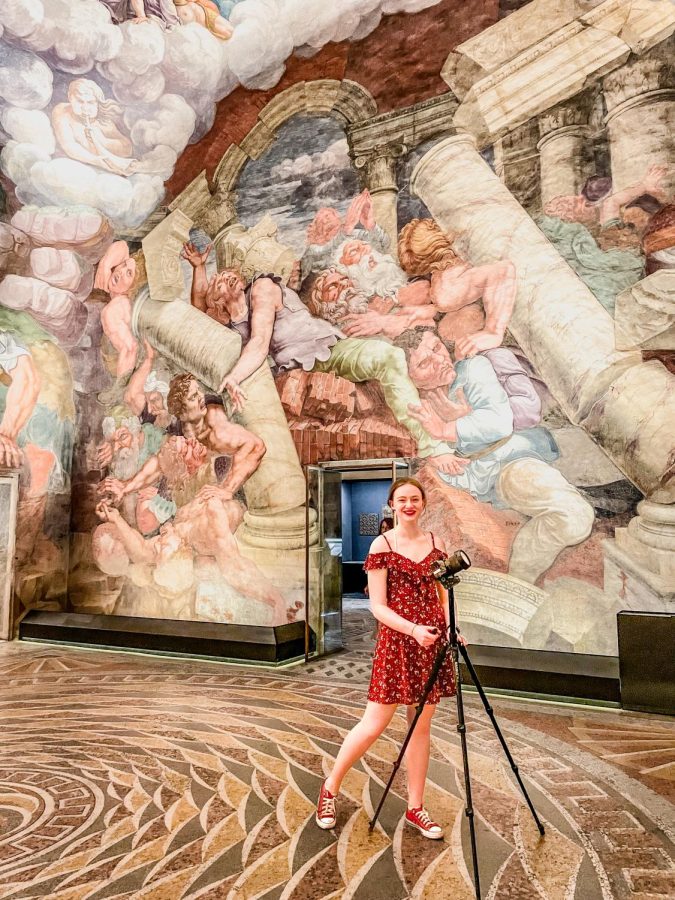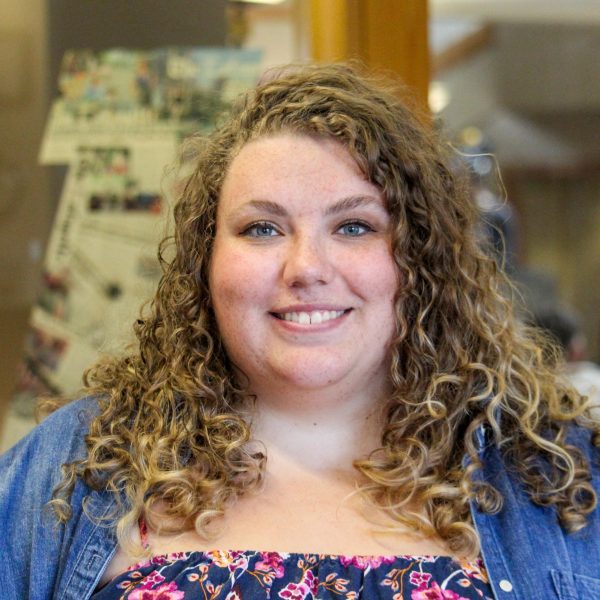You’re inside the Magi Chapel, staring up at the Renaissance frescoes, boldly colored and intricately detailed. The scene is all-consuming; it surrounds you and pulls you in. Now, take off your virtual reality goggles. You’re in the Williams Center for the Arts attending art history professor Eric Hupe’s Italian Renaissance class.
Hupe and his research student Caitlyn Carr ‘23 are at the forefront of the movement toward the use of virtual reality (VR) in art history education.
According to Hupe, VR can make art more accessible in a field that “often relies on travel to physical sites to see spaces that can only be experienced, like paintings that are made to be viewed in the architecture.”
However, students can only experience these sites in VR if they have been properly cataloged. That’s where Hupe and Carr’s recent expeditions come into play.
Across a number of trips to Italy in recent years, Hupe and Carr have meticulously photographed upwards of 14 historically important sites. These pictures then go through a process known as photogrammetry, or the creation of a 3D model.
According to Carr, the modeling process begins with performing a quality check of the images and running them through the modeling software. Then, Carr fine-tuned any aspect of the site in need of a touch-up.
“From there, you can play around with, ‘Oh, it didn’t get the scale of this particular object right. One portrait isn’t as clear as it could be, let’s rearrange the pictures,’” she explained. “So it’s a lot of trial and error from that point onward.”
The 3D models created by Hupe and Carr have now been implemented in Hupe’s Italian Renaissance class this semester.
“Every Friday is a virtual field trip,” Hupe said. “It’s focused on a particular site that day, so it’s a close study day, and it’s meant to complement the topics that we’ve been discussing throughout the week during Monday and Wednesday’s classes.”
According to Carr, this allows for the students to have an immersive, interactive experience — including some aspects which wouldn’t even be possible on-site in Italy.
“The way Professor Hupe has it laid out in his class, it’s like a private tour where you can just wander around the sites with your classmates, and you can have loud conversations you might not be able to have in that actual space,” she said.
“Or we have it so you can draw on the walls, and if it’s a painting, you can circle important details,” Carr continued. “They wouldn’t like it very much if you started doing that in Florence. So it gives you an opportunity not only to stand in for visiting that place but to do things you would not even be able to do if you did have the opportunity to go there.”
The introduction of new technology into the classroom has not come without its hiccups, however. Ethan Riddle ‘25 is one of many students who, though appreciative of the opportunity the technology provides, have experienced motion sickness, connectivity issues and other nuisances that make it difficult to be fully present in the virtual experience.
However, Hupe hopes the experience will outweigh the struggles.
“It’s a total joy to work out and figure out how we can make this better,” he said. “And my students know that they’re total guinea pigs. We’re going to try to figure it out, and there’s going to be mistakes, but I think that the benefit is still worth the effort.”
In the future, Hupe and Carr hope to expand the VR sites that the department has to offer. This summer, Hupe’s team will venture across the globe again, this time to catalog Byzantine sites.
“Our goal really in the department is to have exemplative works from the entire history of art and to help integrate this technology more fully and seamlessly into our curriculum and the way that we teach,” Hupe said.
Hupe and Carr recently co-published a paper on their methods entitled “The Virtual Renaissance: Adopting Virtual Reality to Transform How Art History is Taught.” This is Hupe’s first time publishing with a student in his four years at Lafayette.
“I think what was unique about our writing process is, by adding Caitlyn’s voice and particularly speaking from the student perspective, it also adds credence to the whole mission,” Hupe said. “Not only are the students generally benefiting, but then also particular students who are working closely on the project are benefiting as well — they are gaining knowledge and skills that can be translated into a whole host of fields.”
With this publication, Hupe and Carr are moving into the global forefront of the VR art history conversation. The pair will spend the coming days in San Juan, Puerto Rico giving a presentation at the International Conference for the Renaissance Society.
“We’re hosting a workshop that’s going to help other professors and scholars from around the world think about VR,” Hupe said.
Examples of the pair’s work with site modeling can be found on Hupe’s Instagram at @profhupe.



























































































































